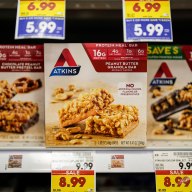If your passion for cars is matched only by your determination to avoid $1.25/litre fuel stops, the Kia Optima Hybrid appears to have been built just for you.
The Korea-based automaker, part of the Hyundai organization, has been aggressively introducing an array of new products at a relentless pace.
As a result, the company’s adolescent-like growth spurt has rapidly brought it into the automotive mainstream where previously it had been considered just a bit player.
For the 2011 model year, Kia issued forth an all new Optima sedan, designed by former Volkswagen-Audi stylist Peter Schreyer who is credited with the look of Audi’s A6 sedan and sporty TT coupe and roadster.
Since his arrival at Kia back in 2006, the brand’s design “language” has headed off in a completely different direction from parent Hyundai’s.
The Optima and its gasoline-electric Hybrid offshoot are shining examples.
Both mid-size four-door sedans appear nearly identical, yet the Hybrid features a slightly different grille, unique 16-inch wheels and extra lower cladding, LED (Light Emitting Diode) tail lamps and a Hybrid badge affixed to the trunk lid.
Battery system & engine
The battery system — in fact the Hybrid’s entire powertrain for that matter — has been lifted from the Hyundai Sonata Hybrid and consists of a 270-volt lithium-polymer battery that’s claimed to be lighter and more durable than other types, such as the lithium-ion cells installed in the Chevrolet Volt and the Nissan Leaf electric cars.
The battery feeds a 40-horsepower electric motor that functions in tandem with a 166-horsepower 2.4-litre four-cylinder engine, for a combined 206 horsepower.
Comparison
The Optima Hybrid is capable of speeds up to 100 km/h on electric power alone, compared to 75 km/h for the Ford Fusion and for short bursts up to 40 km/h for the 2012 Toyota Camry Hybrid.
However, the Optima’s estimated 5.6 l/100 km city and 4.9 highway fuel economy falls short of the Camry’s 4.5/4.9 and the Ford Fusion’s 4.6/5.4 city/highway ratings.
Fuel-sipping features
The Hybrid uses a special six-speed-automatic transmission that operates without a traditional torque converter, again a departure from most hybrid cars that use continuously variable transmissions. The top three gear ratios have been designed so that the engine runs at the lowest-possible engine speed to help save fuel.
The car also features low-rolling-resistance tires and an integrated starter-generator that shuts off the gas engine when the vehicle is stopped.
















